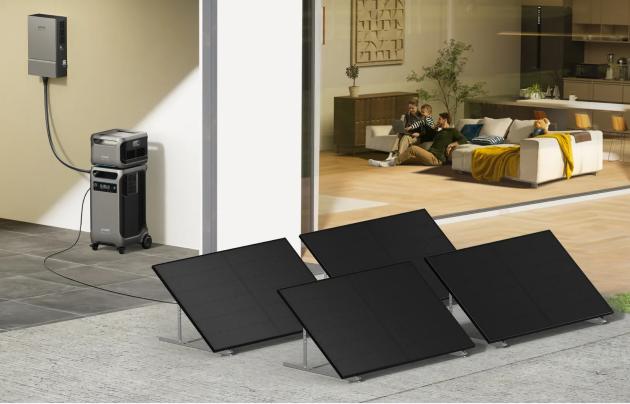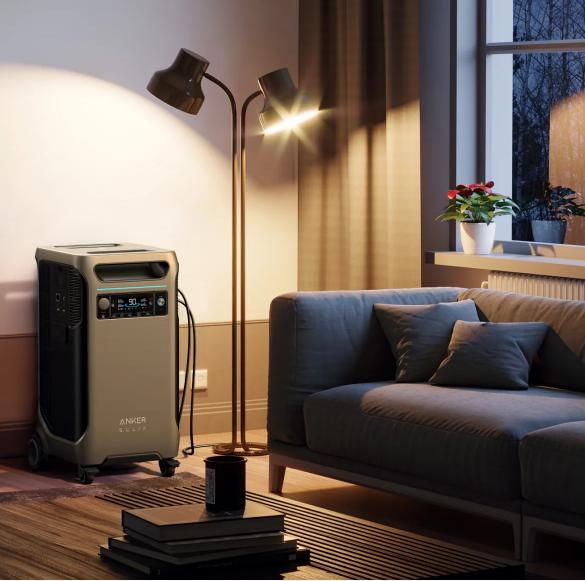
Making your home energy-efficient is key to reducing costs, lowering your carbon footprint, and preparing for future energy demands. Whether it’s through renewable energy or smart technology, there are various ways to power your home while maximizing efficiency. Below, we explore some effective methods for powering your house more efficiently.

Powering Your Home Efficiently: Key Approaches
Let’s dive into different strategies to reduce energy consumption and meet your household’s power needs efficiently.
1. Install Solar Panels for Renewable Energy
Solar panels are a popular way to power homes efficiently by harnessing sunlight. Homeowners can generate their electricity and even earn credits through net metering by feeding excess power back into the grid. Solar installations can significantly reduce utility bills, especially when paired with energy storage solutions. By evaluating how many watts does a house use, you can generally determine the size of the solar panel system needed for optimal results.
2. Use Smart Thermostats to Control Heating and Cooling
Heating and cooling systems account for a significant portion of household energy consumption. A smart thermostat helps you control temperatures remotely and optimizes energy use by adjusting settings based on your schedule and habits. This technology can prevent waste, ensuring that heating and cooling systems only run when necessary, further enhancing energy efficiency.
3. Invest in Energy-Efficient Appliances
Replacing old appliances with energy-efficient models reduces electricity consumption significantly. Look for devices with ENERGY STAR certifications, which guarantee lower energy use without compromising performance. Efficient refrigerators, washing machines, and dishwashers can dramatically lower electricity consumption, making it easier to manage household energy needs.
4. Integrate a Home Battery System
For homes equipped with solar panels, adding a battery system ensures you store excess energy for later use. This setup provides energy during peak hours or in case of power outages. A battery also helps reduce dependency on the grid, keeping your home powered efficiently even at night. Understanding how many kWh your house uses helps estimate the size of the battery needed for uninterrupted energy. Additionally, choose Anker’s high-capacity and durable LiFePO4 portable power stations for efficiency and durability.

5. Utilize Wind Energy if Location Permits
In areas with consistent wind, small residential wind turbines can complement other energy sources like solar panels. Wind energy offers a renewable way to power homes and reduces long-term energy costs. However, it’s crucial to assess whether your location provides enough wind exposure to make this option viable.
6. Seal and Insulate Your Home
Proper insulation and sealing prevent air leaks, keeping your home warmer in winter and cooler in summer without overloading heating and cooling systems. Insulating your walls, attic, and floors minimizes energy waste and maintains a comfortable indoor temperature, cutting down on energy usage year-round.
7. Switch to LED Lighting
LED bulbs are far more efficient than traditional incandescent bulbs, using up to 80% less energy and lasting much longer. Swapping all indoor and outdoor lights for LEDs can lead to noticeable savings on energy bills over time. This small change contributes to overall household energy efficiency.
8. Leverage Smart Power Strips
Many appliances continue drawing power even when they are not in use—known as phantom loads. Smart power strips help eliminate this issue by automatically cutting off power to devices when they’re idle. Using these strips for home offices or entertainment centers ensures that appliances aren’t consuming electricity unnecessarily.
Conclusion
Powering your home efficiently involves adopting a mix of renewable energy, smart technology, and energy-saving practices. From solar panels and energy-efficient appliances to smart thermostats and proper insulation, each approach helps reduce consumption and costs. By following these tips, you can create a sustainable and cost-effective power system for your home. So try these strategies if possible to not only benefit the environment but also ensure a more comfortable and energy-independent lifestyle.